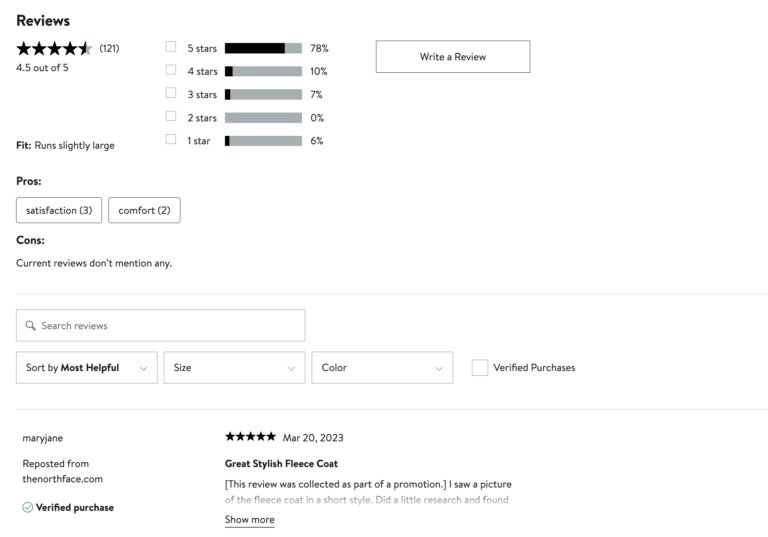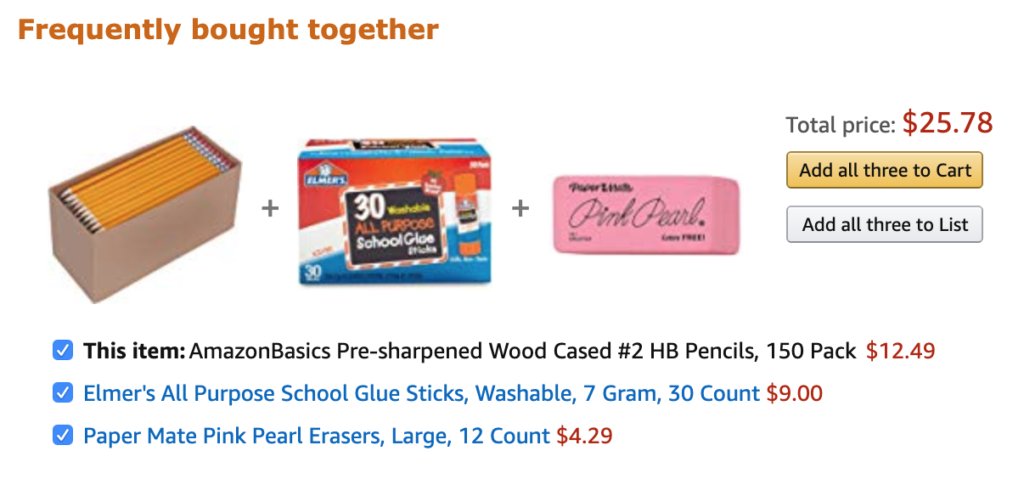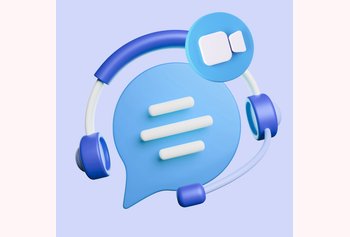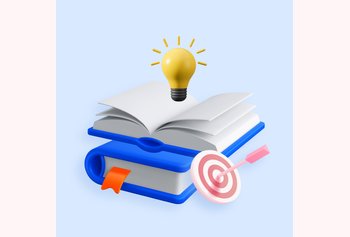12 Types of Customers and How to Deal With Them

Table of contents
Every customer is different, with their own individuality, preferences, and needs.
They may be at various stages of the sales funnel, ranging from those who are curious window shoppers to those who are loyal repeat buyers.
As a smart business owner, you understand that a one-size-fits-all approach just won’t cut it. That’s where the power of customer segmentation comes in.
This article will cover the 12 types of customers and their needs, as well as share key strategies to keep them happy.
Let’s get started.
Table of Contents
- 12 Different Types of Customers
12 Different Types of Customers
The needs of a regular customer differ from those of a new customer. Hence, you can’t handle all of them the same way. You have to adopt a different approach based on each customer type’s personality characteristic to see results.
Here’s a quick rundown of the different types of customers:
1. New Customers
New customers are customers who purchase from your brand for the first time. They may come across your brand while researching, through their network, or they may have found your bottom-of-the-funnel content, and the good news is they liked what they saw.
Some new customers know what they want and why. Others are still trying to understand your product, and so they need extra guidance. Either way, they’re looking to convert with ease and speed, so this is where you need to make a lasting impression.
What they need:
- Smooth onboarding process
- Assistance on simple issues
- Seamless customer journey
How to keep them happy:
Provide social proof to reassure new customers about your business. Show them customer reviews, rate services, and client testimonials on your website to cement their decision to stick with you.
Nordstrom is one of the many ecommerce brands that leverage customer reviews and ratings on product pages to inspire confidence, ensuring the shopper goes through with their purchase.

Other ways to keep new customers happy include:
- Share onboarding emails, product demos, tutorials and blog posts to explain how your product works.
- Promptly answer all their queries.
- Provide excellent customer supportand build a relationship beyond the first purchase
- Make them feel special and appreciated so they become repeat customers.
2. Potential Customers
Potential customers are “lookers” browsing through your website that haven’t yet made a decision. They may have shown interest by filling out a contact form or subscribing to your digital newsletters, but they probably won’t buy anything at the moment.
You have to convince potential customers that your offering is the best solution to their problems.
What they need:
- A specific product that meets a specific need or solves a specific pain point
- Nurturing and warming up to convert them into new customers
How to keep them happy:
- Provide excellent user experience on your website
- Remove obstacles like annoying pop-ups and ads to make for easy navigation.
- Demonstrate value by anticipating customer needs and pointing them to a resource, like a landing page or case study, that is related to the issue they’re trying to solve.
- Embed personalized demos on your landing pages to showcase your product in action for different use cases. You can use a dedicated product demo tool such as Navattic or a Navattic alternative to easily create such interactive guides.
- Make it clear that you’re available anytime to answer any questions they may have.
Take a cue from Netflix on how to keep potential customers happy.
The website is easy to navigate, plus the OTT platform offers a risk-free 30-day trial period without commitment. Also, Netflix addresses FAQs potential customers may have on their web pages.
3. Angry Customers
Angry customers are a part and parcel of every business.
These customers may be unhappy with your services for a reason—or they may be having a bad day. Unfortunately, if you don’t tackle their issues head-on, they’ll leave a bad review that may hurt your brand reputation making a future rebranding even more critical.
The good thing about angry customers is they are also a great source of feedback.
Through their complaints, you’ll discover flaws in your processes or services you should improve to provide better user experiences. For instance, you may learn your customer service is slow or inefficient, which you may not be aware of.
Tailor Brands has a customer reviews page page dedicated for their customer testimonials. It features reviews from Trustpilot and Capterra and updates automatically constantly to show the most recent reviews. It’s a great way to show authentic reviews for possible new customers and build trust for the brand.
What they need:
- Empathetic approach
- Someone willing to put emotions aside and hear them out
- A solution to whatever issue they may have
How to keep them happy:
- Monitor your customer service channels for any sign of trouble.
- Give them the benefit of the doubt, so they don’t feel belittled or ignored.
- Understand their problems and fix them ASAP.
- Offer resolution options like gifts, compensations, or discount purchases.
- Train your customer service agents on handling angry customers so they’re not caught off-guard in a difficult situation.
4. Curious Customers
Curious customers have visited your website multiple times, researched a desired product, and are very close to converting. But they still have some nagging questions—questions you need to address to convert them into new customers.
What they need:
- Informational content
- Efficient customer service for tackling their numerous questions
- Proof that you have a solution to their needs
How to keep them happy:
- Make your website a dream to use by including plenty of self-service options.
- Have several informational content covering topics like delivery, refund policies, and warranties.
- Offer live chat support and ensure your service agents are knowledgeable about your products. The more helpful your agents are, the more likely you will make the sale.
5. Loyal Customers
Loyal customers love your products and make repeat purchases year after year. They even become your brand advocates, sharing their positive experiences at every opportunity.
The loyalty of a customer is not an easy task to achieve. One of our survey reports reveal that 52% of consumers consider a great customer experience as one that is quick, personalized, and involves interacting with a highly knowledgeable service team. This is how you ensure your loyal customers stay happy.
What they need:
- Appreciation and personalized experiences
- Exceptional support
- Proactive service
How to keep them happy:
- Put the spotlight on your loyal customers by featuring them in case studies and getting their testimonials. Not only will this make them feel special but also builds social proof for your business.
- Form alliances and connect with your loyal customers. Talk to them about their experiences with your brand and apply the learnings to improve customer service for other types of customers.
- Offer generous customer loyalty reward programs.
- Think of unique ways to appreciate them (for instance, show them first-look updates on new products).
6. Impulse Customers
Impulse customers make purchase decisions on the spur of the moment. They aren’t shopping for anything specific and don’t typically spend much time researching before taking action.
As you build strong buyer personas, consider impulse customers. They are the best customers to upsell and cross-sell to because they’re very receptive to product recommendations.
What they need:
- Seamless customer experience
- Help with product use cases, warranties, delivery or return policies
How to keep them happy:
- Showcase your offers and deals site-wide so they don’t spend time searching.
- Keep things simple and remove any obstacles on their purchase journey. Make your checkout process smooth and instant.
- Offer product suggestions and ensure they match the customer’s interests. Amazon does this well with the “Frequently bought together” section on its website.

7. Discount Customers
Discount customers are only interested in your product when you’re looking to reduce the price. They know the value of what they want but are willing to spend time and effort searching for the best deals. They simply refuse to pay the full price.
Discount customers usually look for extra information on the type of deal or discount you’re offering. But they’re likely to leave once the discount stops applying.
What they need:
- The best deals
- Exceptional service
How to keep them happy:
- Explain the value of the deal you’re offering. Make them understand that even at a discounted price, they get real benefits and save money.
- The discount customer may need help using a coupon code or entering a discount number, so ensure you provide extra information and stellar customer service.
- Go beyond your initial deal and offer added value, to retain them as customers. For example, faster and cheaper delivery options than your competitors or further discounts when they buy an upsell product.
8. Active Customers
Active customers are different from loyal customers. While they consistently buy your products and services, active customers can easily switch to your competitors if they get offered a better deal.
Hence, it’s essential that you don’t ignore them because they already use your products. Remember that it’s always cheaper to retain active customers and make them happy than to source for new ones.
What they need:
- Attention
- Nurturing using customer retention strategies
- Stellar customer service
How to keep them happy:
- Take care of your active customers by giving them additional value, such as discounts, good deals, exceptional training video materials, etc.
- Get your high-performing sales teams to continuously engage and interact with your active customers to stop them from switching to your competitors.
- Focus on their success, and they’ll stick with you for the long haul.
9. Lapsed Customers
Every business has customers that left at one time or another. But are they truly gone?
Yes, you didn’t provide enough value or your customer service was lacking. Maybe you made them angry, and they left. But you can still fix things and get them back.
As humans, we all like familiar things. Since they already know your brand, your lapsed customers can return, provided you work proactively and resolve their problems.
What they need:
- A solution to whatever issues they have with your brand
- Personalized approach to win the trust and demonstrate the value
How to keep them happy:
- Find out why they left you. Was it a customer service complaint, or they got better deals elsewhere?
- Fix their issues before reaching out to them. Timing is crucial here because you may not get a third chance.
- Prepare some exciting deals or new products to entice them to come back.
10. Confused Customers
A few customers may have reached your website by mistake and need help moving forward. Others may have a query about a product they bought from you. They may need clarification about how to use it and even get frustrated in the worst-case scenario.
What they need:
- Solutions (and fast)
- Clear explanations of your brand and what you offer
How to keep them happy:
- Make sure all contact channels, like live chat and chatbots, are readily available.
- Deliver top-notch customer service and focus on your unique selling point. The next time a confused customer comes across your website, they may want to purchase from you.
11. Need-based Customers
A specific need drives these customers. They get on your site, purchase what they want from you, and leave.
Think of them as customers that visited your site some time ago, learned about product offers and came back when they needed them. Google Analytics reports provide details of such customers, where they come from, and their browsing behaviour.
What they need:
- Good user experience
- Great customer support
How to keep them happy:
- Ensure they get what they want to build strong customer relationships and turn them into repeat buyers.
- Consider introducing a subscription-based model to automate recurring payments and avoid need-based customers having to make repeat purchases as and when the need arises.
- Optimize your website for easy navigation, a simple checkout process, and multiple payment options. Take a cue from Adidas‘ checkout page which has an auto-fill feature, allowing customers to place an order within minutes.

12. Referring Customers
Referring customers are happy with your products and services and willing to become your brand advocates. These customers can bring you a ton of new customers as well as good PR, so you mustn’t ignore them.
What they need:
- Motivation
- Become a part of your community
How to keep them happy:
- Don’t lower the quality of your products and services. Keep innovating and evolving.
- Build a community around your shared values and make them a part of it.
- Provide incentives that motivate them to refer more people to your brand.
Looking to provide seamless support for different types of customers?
When it comes to keeping customers happy, there are a few golden rules: personalization, top-notch customer service, delivering unmatched value, and prioritizing their feedback.
Hiver helps you offer real-time support to different types of customers, on multiple channels like email, live chat, knowledge base, WhatsApp, voice, and more, all from the comfort of your inbox. We make sure you have all the tools to provide exceptional customer service.
Sign-up for our free 7-day trial. No credit card required.

































